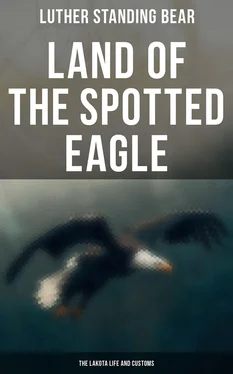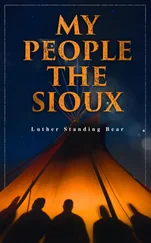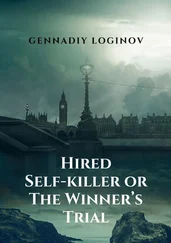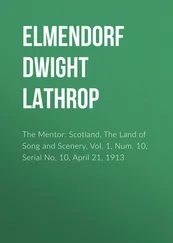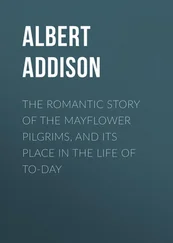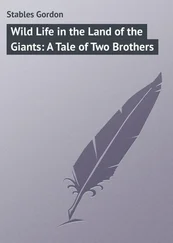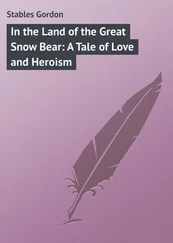When all these details have been completed, godfather sets the day of the ceremony and so notifies the father of the children. The father gathers his horses in from the plain so as to have them handy to give away on the appointed day. Horses being very valuable property they, of course, form the greatest sacrifice on the part of the father.
On the day of the ceremony the procession begins at the tipi of the godfather and goes to the tipi of the father. It is led by a virgin carrying a lovely and perfect ear of white corn on a slender wand. From the tip of the ear of corn there waves a white eagle plume. Next come two dancers carrying rattles in their right hands and wands in their left hands. The wands are decorated with a fan-shaped ornamentation of eagle feathers, a fluff of green neck feathers of the duck, and some owl feathers, all symbolic. They are further decorated with paint, and tassels of dyed feathers. After the dancers follows a group of singers keeping time to the beat of the drum. They sing:
The entire thought of the first stanza is given in the first line, the only one that can be translated. This line says, ‘Where are the children whom we seek?’ The rest of the verse implies that the children are being sought, for something of importance is to take place.
The first line of the second verse says that the Hunka or Confirmation is to take place. The word Hunka means the whole ceremony—songs, dances, and speeches. The chorus of the song is merely an arrangement of syllables to carry the tune.
When the procession reaches the tipi of the father, there they find the child, or children. The women who carry the buffalo robe put the child in it, and each woman to a corner, join the procession. The singing continues, and in the same order of march, the child is taken to the tipi where the godfather has placed the new clothing and where he has built the altar. The child is taken in and the old clothing which it has been wearing, signifying the old life, is removed. New garments, signifying a new life, replace the old. The child is now ready for instruction from the wise man who has been brought there for that purpose. The old man offers thanks to the Great Holy before the sacred altar. He instructs the child in its duties to the tribe. The old, weak, or disabled must be looked after and the child must never refuse to help those who ask. He must live righteously, always speak truthfully, and fill his daily life with usefulness. When the wise man finishes, he paints a black line across the forehead and down the bridge of the nose of the child. He then ties a white-eagle fluff to the hair at the left side of the head. This fluffy plume, which symbolizes a prayer, completes the robing of the child. The wise man smokes the pipe while all is silent. When he puts the pipe once more upon the earth the tomtom beats are sounded in quick rhythm. The singers begin the song once more and the beautiful Confirmation dance is performed. When it is ended the ceremony is over and the solemnity of the occasion has passed. Feasting and fun begin and there is much giving away of presents.
The older boys as a rule had a group of younger ones following them and as I was now a good marksman with the bow and an expert horseman I joined this group of followers, too. In everything the little fellows were imitators, and no matter what the game or sport, they tried to meet the pace. The nice thing about it was that the older boys never seemed to regard the younger ones as nuisances. They took time to look after us and, in fact, all seemed proud to share in this responsibility.
There was a custom among the Lakotas often followed by young men whereby an older boy voluntarily adopted as a special charge some younger boy. The older one appointed himself as guardian and helpmate to the younger, the obligation to last throughout life; and through war or peace, in times good or ill, the brotherhood was to exist. If the two went with the same war-party, the older boy gave up his life if necessary to save that of the younger. The ties assumed could have been no stronger had they been actual blood ties. This trust we put in older companions was never questioned, not even by our parents, and my mother never worried when I was with my caretakers.
When the contests of the older boys became too much for us little fellows, then we watched them. It was natural for me, and I suppose it was the same with the other boys, to pick the best one to imitate, whether in work or in games. So strong with us was the idea of example that the boy who played ball better than all the rest was the one who became the example. If a boy in the group was outstanding as a rider, then I practiced riding, hoping that I might be as good. There was always one, or a few in every band, who swam the best, who shot the truest arrow, or who ran the fastest, and I at once set their accomplishment as the mark for me to attain. In spite of all this striving there was no sense of rivalry. We never disliked the boy who did better than the others. On the contrary, we praised him. All through our society, the individual who excelled was praised and honored.
On the hunts we younger boys carried the blankets and the extra arrows for the older boys. We made ourselves useful in exchange for our welcome. In following them we boys got our first hunting lessons. Woods hunting was easier than plains hunting, so we hunted first in the woods. When we had reached the haunts of the animal we sought, we began to look and listen. Animals are clever and we had to match their cleverness by reading their obscure signs. We not only watched the path ahead of us and the paths to the side, but kept watch of the path back of us. A good hunter watches all animals, for one often betrays the presence of another. Some of the signs we watched for were bits of hair, grass, broken sticks, the bark of trees, birds in the air, foot prints and overturned stones. Then, too, we depended much upon our sense of smell. Some of the animals that we could most readily scent were the porcupine, badger, bear, and skunk. A beaver-dam could also be smelled for some distance. Whenever signs grew scarce and our leaders stopped to survey the landscape and search for new signs, we did the same and tried to see the things they saw.
Rabbit-hunting was great fun even for the older boys, and we never refused to join one, for we little fellows got the tails. The fluffy tips were dyed in pretty colors and we wore them for hair ornaments. The skins we saved to make into winter hunting caps. Furs being usable, skinning was something else to be learned. When a porcupine was skinned, the quills, hair, and tails were saved—the quills to be dyed by the women for their decorative work, the hair for head roaches, and the tails for hair combs. The fur of the skunk was cut into strips and used for neck ornaments, while the entire hide was esteemed by the old men for tobacco pouches. The scent bag of this animal was carefully preserved, too, and the liquid kept for disinfectant purposes. A drop mixed with paint and smeared on the body kept away ailments. Skins of the raccoon made fine hunting caps and most hunters preferred a cap of fur to a bare head, for it helped in concealment. The tail of the raccoon we boys used to tie on the necks of our ponies. The furs of the otter and the beaver were most prized by the young braves, but these animals were wary and only the older boys hunted them. However, by the time we boys were ten or twelve years of age we were quite wise in trailing, stalking, covering, disguise, and all the arts of a good hunter. Some of the lads before their teens joined the men in their hunt for big game. At an early age physical strength was developed from long-distance walking, running, and climbing. Even long hours of crawling or walking in a stooped position had to be endured, for much of the hunting was on the low-shrubbed and grassy plains country.
Читать дальше
